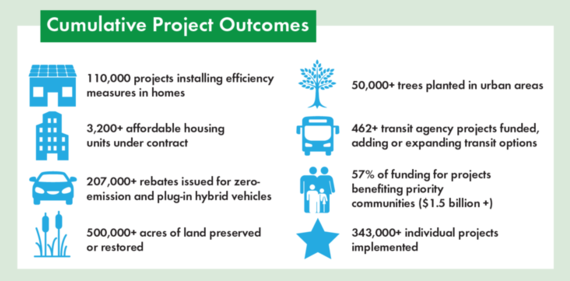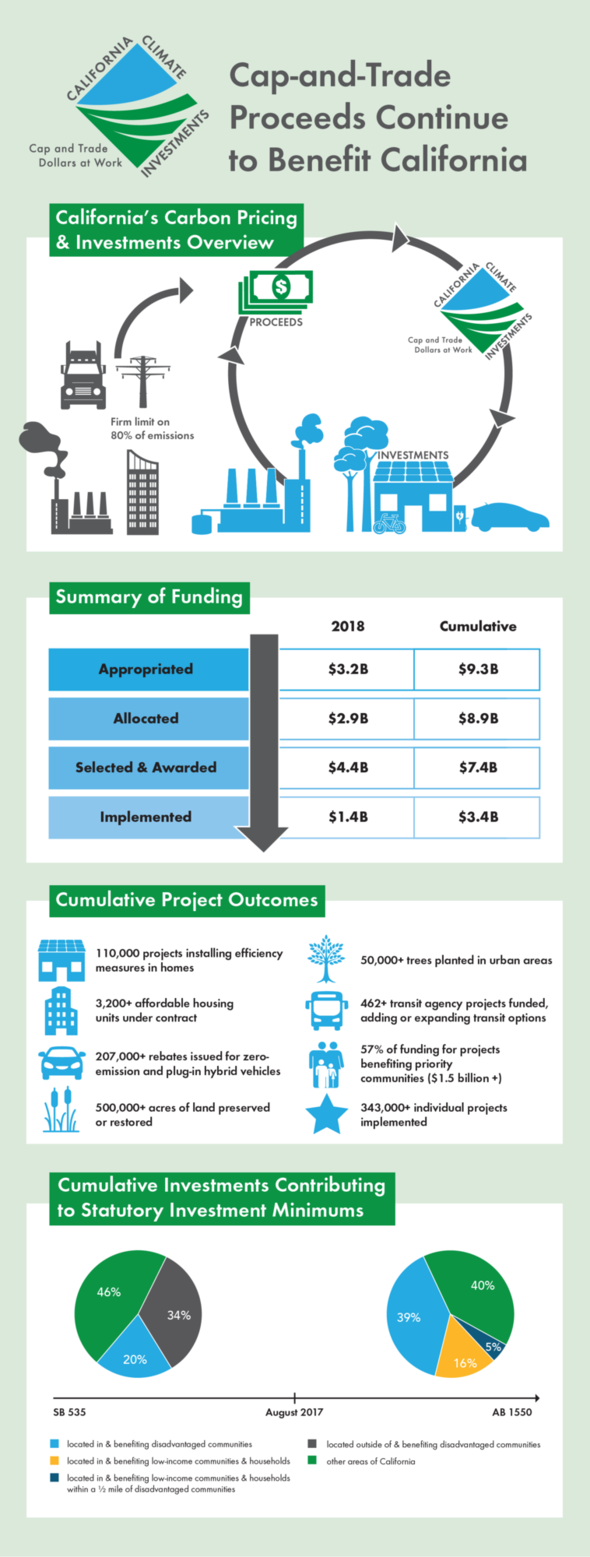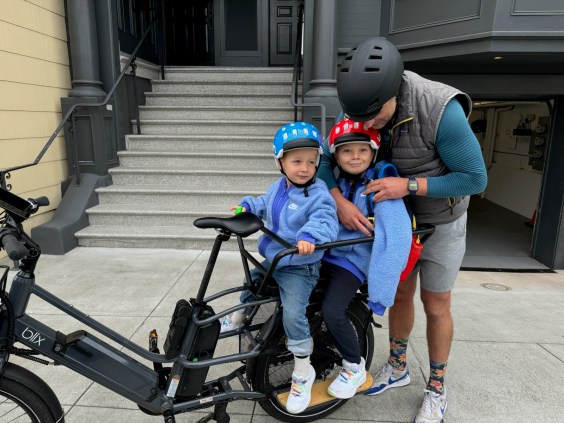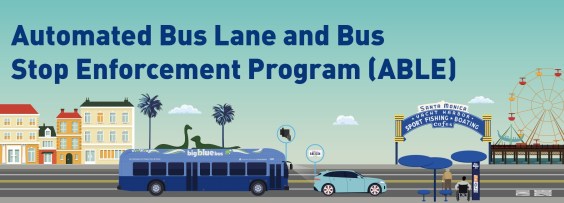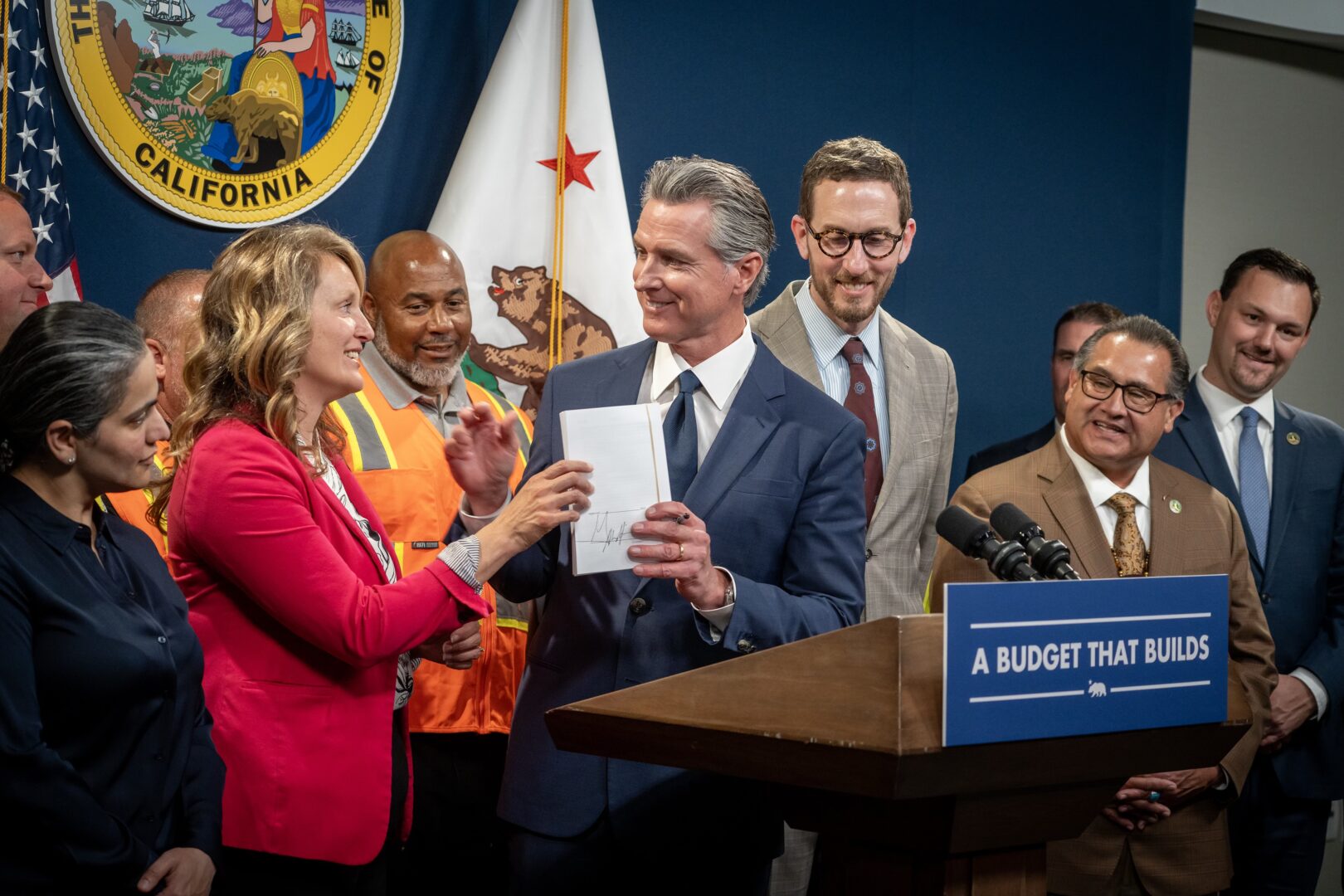Note: GJEL Accident Attorneys regularly sponsors coverage on Streetsblog San Francisco and Streetsblog California. Unless noted in the story, GJEL Accident Attorneys is not consulted for the content or editorial direction of the sponsored content.
The California Air Resources Board just released its annual report analyzing last year's investments made from the Greenhouse Gas Reduction Fund (GGRF.) The fund receives money from the state cap-and-trade program, which caps greenhouse gas emissions and auctions off "pollution credits" to industries.
In 2018, the GGRF invested $1.4 billion in various projects to reduce the effects of climate change in California communities. That was about double the amount spent in 2017. Since the program began in 2012, it has invested $3.4 billion in projects that are either completed or under way, with a total of $9.3 billion in the pipeline.
CARB estimates that the 2018 investments will reduce greenhouse gas emissions by almost 37 million metric tons, about what would be produced by burning four billion gallons of diesel fuel, or "roughly equivalent to taking eight million cars off the road for a year." Cumulatively, last year's investments in energy efficiency are expected to save enough energy to power 15,000 homes for a year.
The GGRF's basic goal is helping build a "just and sustainable future" for California by supporting programs and projects that reduce greenhouse gas emissions in an equitable way. GGRF allocates money to twenty different state agencies, and those agencies are supposed to work collaboratively and engage the public in planning projects. The investments are also supposed to deliver health, economic, and environmental benefits to communities throughout the state.
The report estimates that GGRF investments are reducing greenhouse gas emissions at an average cost of about $75 per metric ton. There are many caveats accompanying that number, but it is telling to compare it to the price per ton of emissions credits that the industry has been paying at auction--currently about $15. That last number has been mistaken for the actual "cost" of reducing greenhouse gas emissions, but it is not.
The report also celebrates the "outreach" achievements of the investment programs, with the number of workshops, presentations, and roundtables increasing each year. It highlights several technical assistance and capacity building programs to help disadvantaged communities, tribal groups, and transit agencies get access to GGRF money and use it to further state equity goals.
New programs established in 2018 under the GGRF include Clean Mobility in Schools, Low Carbon Fuel Production, Fire Engines and Equipment, Prescribed Fire, and Regional Forest and Fire Capacity. In addition, investments encouraged cross-sector communication, for example in the Affordable Housing and Sustainable Communities program, which connects the housing and transportation sectors.
The report lists details on how much has been invested in each GGRF program and highlights examples of what those investments are. Many are being built, but many more are in some planning stage and their full effect will not be felt for a number of years. For example, GGRF investments in the clean transportation sector include:
- Community clean air grants, which help communities identify and evaluate air pollution sources
- Several programs for replacing polluting vehicles, including agricultural and freight vehicles and buses, and a program to replace rural school buses with electric vehicles
- Clean mobility options such as electric car-share, bike-share, and vanpool options in disadvantaged communities or for agricultural workers
- Support for transit including high-speed rail and the Intercity Rail Capital Program, which is helping transit and rail agencies modernize and update their systems and equipment
- The Affordable Housing and Sustainable Communities (AHSC) program that funds interconnected transportation and housing projects to reduce car use
Highlights include a Ukiah United School District program replacing three old diesel school buses with three electric school buses. And the poster child for the AHSC is Redding, California, where new housing is being planned and built in its downtown, to be connected to local and regional bike lanes and trails and close enough to walk to shops and other destinations.
Some of these programs may have happened whether the cap-and-trade program exists or not, but the vast majority of these investments would never have been made without it. And the emphasis on interagency cooperation and improved public planning, including gathering feedback before projects are built, would not have the financial backing it needs if not for these investments.
The report will be presented to the Senate tomorrow at a hearing of the Budget Subcommittee 2 on Resources, Environmental Protection, Energy and Transportation, along with an analysis of the GGRF by the Legislative Analyst Office. The agenda can be found here.
